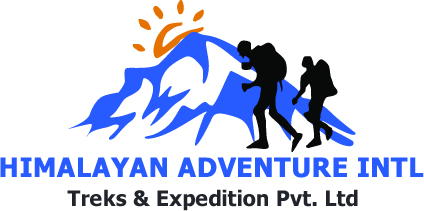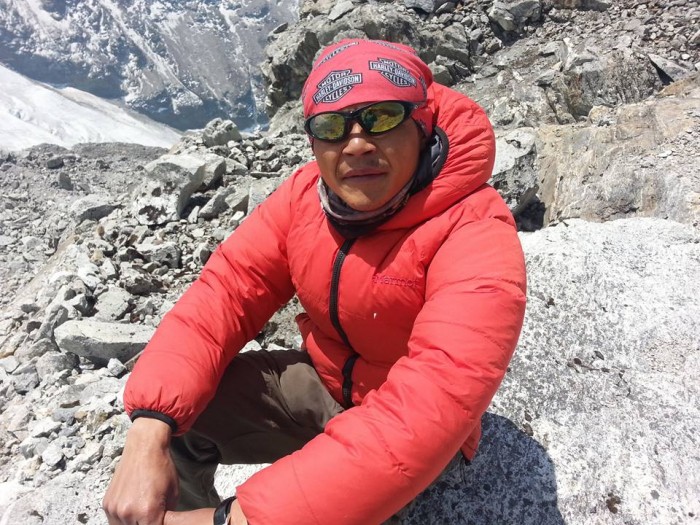Nestled in the heart of the Himalayas, the Ratna Chuli Expedition stands as a testament to the allure and challenges of high-altitude mountaineering. Aspiring adventurers and seasoned climbers alike are drawn to this formidable peak, not just for its technical difficulties but also for the breathtaking vistas it offers. In this article, we delve into the details of the Ratna Chuli Expedition, the climatic seasons that shape its challenges, and the optimal time to embark on this exhilarating journey.
The Majesty of Ratna Chuli: Ratna Chuli, standing at an imposing height of 7,035 meters (23,077 feet), is situated in the Manaslu region of the Nepalese Himalayas. The peak is part of the Ganesh Himal range and is known for its steep faces, challenging rock and ice sections, and panoramic views that extend to neighboring peaks like Manaslu and Langtang.
The Expedition: The Ratna Chuli Expedition is not for the faint of heart. Climbers can expect a combination of technical rock climbing, ice climbing, and challenging ascents that demand a high level of skill and endurance. The route to the summit often involves traversing crevasses, negotiating seracs, and overcoming high-altitude challenges such as acclimatization.
Climatic Seasons: The Himalayan region experiences distinct climatic seasons, each presenting its own set of challenges for mountaineers. The two primary seasons for mountaineering expeditions are the pre-monsoon (spring) season and the post-monsoon (autumn) season.
-
Spring Season (Pre-Monsoon): Running from late April to early June, the spring season is the most popular time for the Ratna Chuli Expedition. During this period, the weather is relatively stable, and temperatures are milder, making climbing conditions more favorable. The days are longer, allowing for extended climbing hours and better visibility. The landscape comes alive with blooming rhododendrons and lush vegetation, adding a touch of vibrant color to the otherwise rugged terrain.
-
Autumn Season (Post-Monsoon): Spanning from late September to early November, the autumn season is the second-best window for the Ratna Chuli Expedition. Following the monsoon rains, the air is crisp, and the skies are generally clear. The temperatures are colder than in spring, but the scenery is equally mesmerizing with the surrounding peaks adorned in snow. The autumn season offers a quieter and more serene experience, as fewer climbers choose this time for their expeditions.
Choosing the Best Time: While both seasons have their merits, the best time for the Ratna Chuli Expedition largely depends on individual preferences and priorities. The spring season is ideal for those who seek milder temperatures, longer days, and a more social atmosphere with fellow climbers. On the other hand, the autumn season offers a more solitary experience, with colder temperatures but equally stunning vistas.
Embarking on the Ratna Chuli Expedition is a commitment to both physical and mental challenges, set against the backdrop of some of the world's most awe-inspiring scenery. Whether you choose the vibrant spring season or the tranquil autumn period, conquering this Himalayan giant promises the adventure of a lifetime. Each climber's journey to the summit is not just about reaching the pinnacle but also about discovering the resilience within and forming an unbreakable bond with the majestic peaks of the Himalayas.
Equipping for the Summit:
-
Climbing Gear:
- Mountaineering Boots: Sturdy, insulated, and crampon-compatible boots are crucial for navigating the varied terrain, from rocky surfaces to icy slopes.
- Crampons: Essential for providing traction on icy surfaces, crampons must be compatible with the chosen boots and adjustable for a secure fit.
- Ice Axe: A versatile tool for balance and self-arrest, the ice axe is indispensable for climbing and descending steep slopes and icy sections.
-
Clothing:
- Layered Clothing: The Himalayan climate is unpredictable, and temperatures can vary drastically. Layering with moisture-wicking base layers, insulating mid-layers, and waterproof outer layers is key.
- Down Jacket: A high-quality down jacket provides insulation during freezing temperatures at higher altitudes.
- Gloves and Mittens: Insulated and waterproof gloves are essential, along with a pair of warm mittens for extreme cold conditions.
-
Safety Equipment:
- Helmet: Protecting against falling rocks and ice, a durable helmet is a crucial safety measure.
- Harness: Climbers need a comfortable and adjustable harness for roped sections and safety during the ascent and descent.
- Carabiners and Quickdraws: Essential for securing oneself to fixed lines and navigating technical sections.
-
Camping Gear:
- Four-Season Tent: Given the harsh weather conditions, a sturdy four-season tent is necessary for shelter during the expedition.
- Sleeping Bag: A high-altitude sleeping bag rated for extremely low temperatures is crucial for a good night's rest at base camps and high-altitude camps.
-
Technical Equipment:
- Ice Screws and Snow Anchors: Necessary for setting up secure anchors in icy and snowy conditions.
- Climbing Ropes: Dynamic and durable ropes are essential for both ascent and descent, providing security on challenging sections.
-
Navigation and Communication:
- GPS Device: Useful for navigating complex routes, especially in areas with low visibility.
- Satellite Phone: A reliable means of communication in remote areas where traditional methods may fail.
-
Personal Items:
- Headlamp: Essential for early morning starts and navigating in the dark.
- Sun Protection: Sunglasses, sunscreen, and lip balm with high SPF protect against the intense mountain sun.

 Plan Your Trip Now
Plan Your Trip Now 


